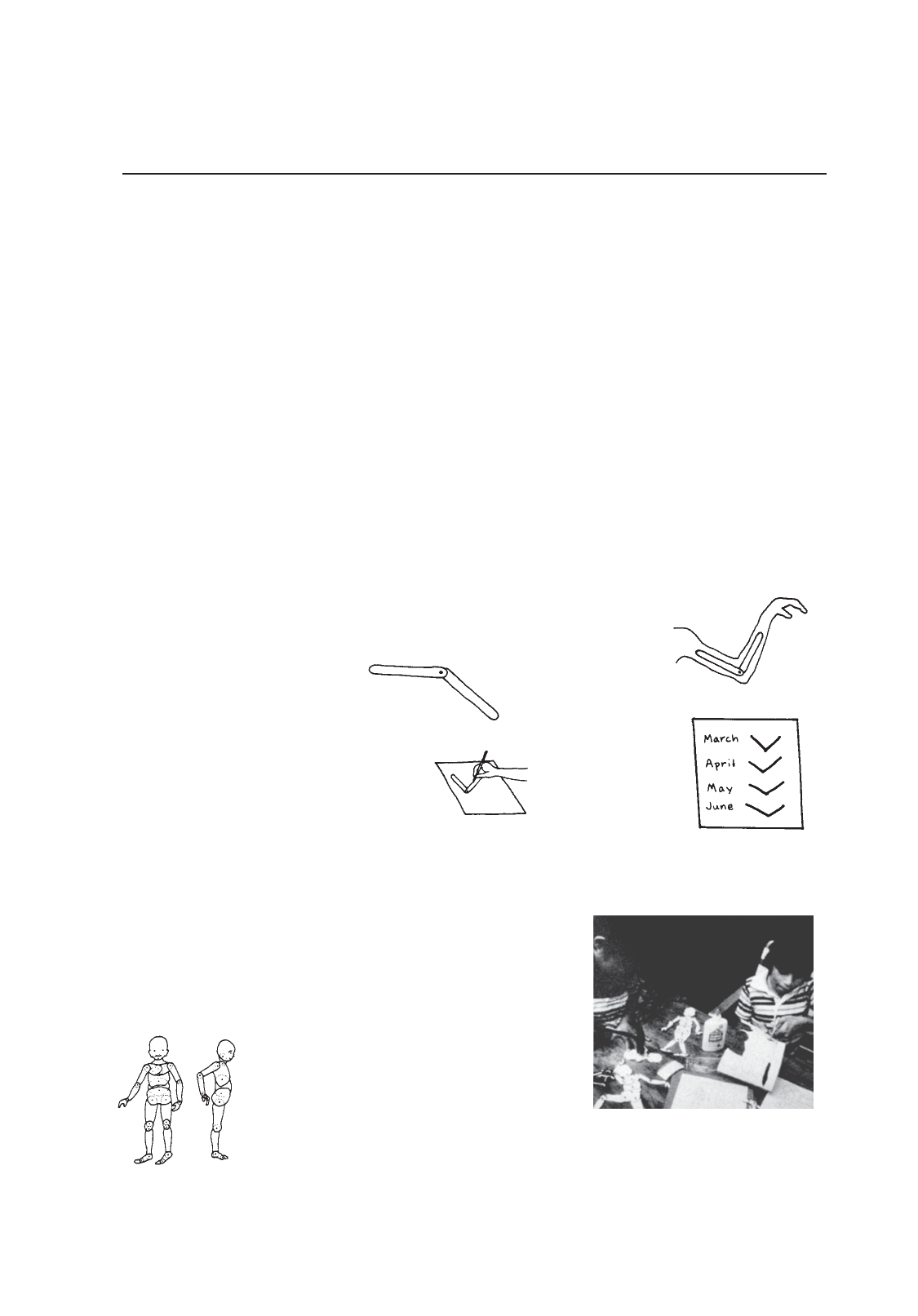
Simple Ways to Measure and
Record a Child’s Progress
5CHAPTER
43
It is important to keep records of each child’s progress. Careful records help workers and
parents to follow the change in the individual child, and to evaluate the effectiveness of
advice, therapy, and aids.
We need a clear view of the progress of the whole child in all areas—physical, mental,
and social. The Child Development Chart on p. 292 and 293 will help us to do this for
younger children. For children over 5, at the end of this chapter there is a simple chart
(RECORD SHEET 5) for evaluating a child’s increasing ability to do things.
When the parents and child themselves regularly measure and record a child’s progress,
they become more aware of gradual improvements. But let them know that the child’s
progress may be very slow and it may take several weeks, or even months, before they
notice any real improvement. Encourage them to be patient and to continue with the
important exercises, aids, and activities.
Unfortunately, the standard way of recording physical deformities and contractures
requires knowledge of angles, degrees, and symbols that many people do not understand.
For evaluation to become a family tool, we need a way to measure, record, and interpret
information that is as simple, clear, and enjoyable as possible. Here are some ideas.
MEASURING JOINT POSITIONS AND CONTRACTURES
You can make a simple
measuring tool using
2 flat pieces of wood,
plastic, or cardboard.
(Tongue depressors work
well.)
Other simple methods
for recording joint positions
are on p. 79.
1. Rivet the pieces
together on one end.
3. Trace the
angle on
paper.
2. Line them up
exactly with
the joint.
4. Do this again
every 1 or 2
weeks to see
if the joint is
straightening
with exercise.
The ‘flexikin’—an aid to measure and encourage progress
Flexikins are cardboard dolls with joints. Disabled and
non-disabled children can make and play with them. They
are so easy to use that even parents who cannot read
can measure and record their children’s contractures.
Because the periodic measurements are recorded as a line
of pictures, anyone can see the child’s progress at a glance.
Flexikins—front and
side view models
We have found that when families
follow their child’s progress using flexikins,
both the child and parents are more likely
to keep doing stretching exercises. As a
result, many contractures can be partly or
completely straightened in the home, and
there is less need for casting and surgery.
Children making and playing
with flexikins. In the PROJIMO
village rehabilitation center, all
the flexikins used are made by
disabled children and the local
school children.